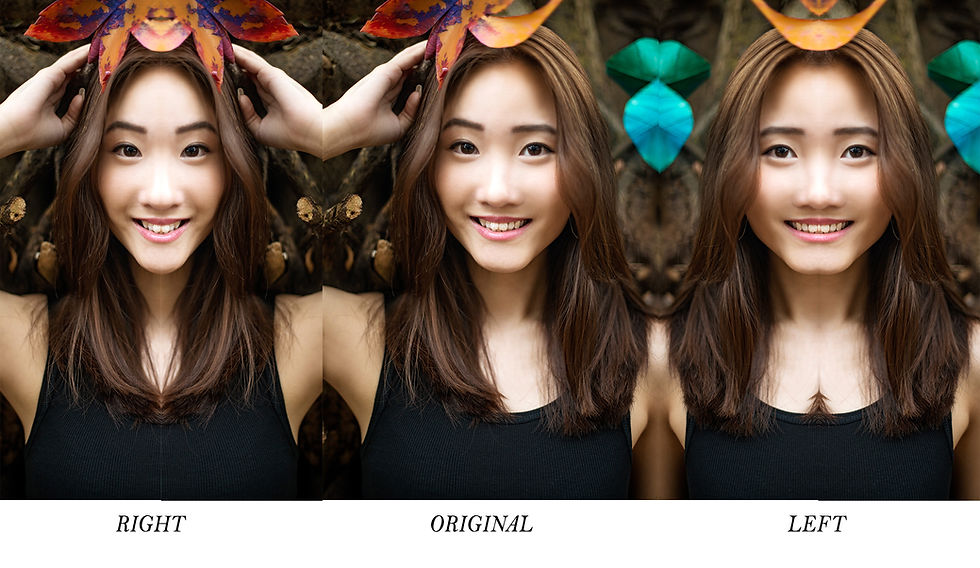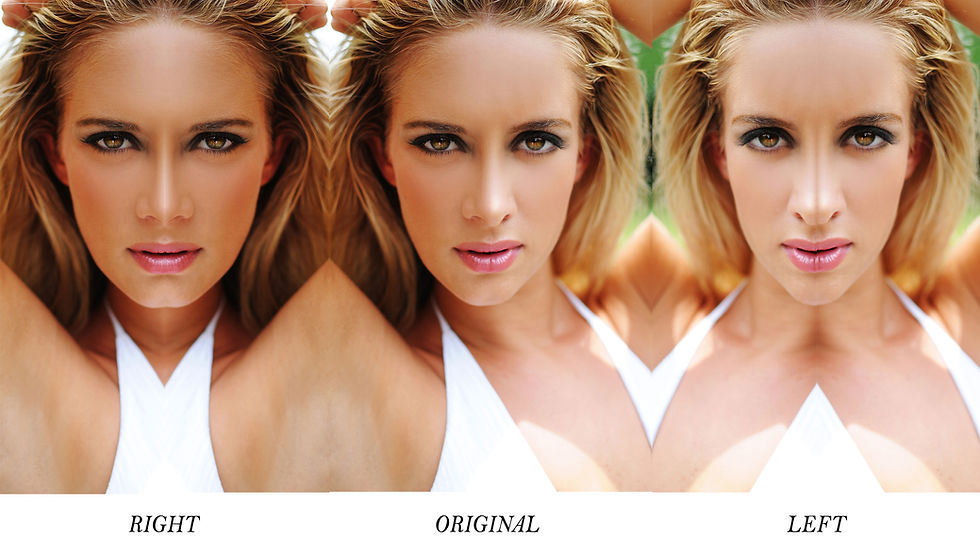Now Let's Get Super-Facial!
- Jay.C

- Jun 3, 2019
- 3 min read
Updated: Aug 5, 2019
Since ancient times, the definition of beauty had always been highly among the philosophers, artists and scientist. Oxford dictionary states that beauty is: “A combination of qualities, such as shape, colour, or form, which pleases the aesthetic senses, especially the sight.” In some culture; the bigger(measured sideways) a lady is, the more beautiful she is considered to be while some other cultures even considered the one with the longest neck to be the most beautiful.
In this article, I am particularly interested in the face which pleases the aesthetic sense in a big way. How did I even think of such a topic you may ask? Well, I am a photographer and I create imagery. How I see beauty in every person that I shoot is very important, this would mean that my definition of beauty have to reach a kind of standard. Having a benchmark would naturally help in the way I pose my subjects and how to create various angle to bring out the beauty in them. However, the phase ‘beauty lies in the eye of the beholder’ is essentially true in my kind of work as art is almost always subjective. I am not going into the commercial aspect of portraits so I will focus the rest of my thoughts on ‘what makes a beautiful face’.
There is something about beauty that can turn our heads and makes us want to look at them. An old photographer friend once told me a simple saying: “Men. After all, are still drawn to beautiful things in the most innate nature”. These words always stayed with me for many years simply because it is so true. When we look at an array of photos, there are always a certain few looks that most if not all would agree that they are beautiful but yet we do not understand why we would think much alike. I believe there is definite science in it, now this is where I will share my benchmark! There has got to be some sort of measurement we all have to agree upon.
The answer is in symmetry! Faces we deem beautiful tends to be symmetrical and balanced, creating a sort of ‘perfection’ in our subconscious mind. Interestingly, the more symmetrical a face is, the more it looks normal to us which is where we like it and then it becomes beautiful. It is like one plus one is not two but one, we need to one minus one to get neutral and that is where it is balanced. What a conflicting statement I know! Another example is that researcher have found out that the distance between the center of a woman’s eyes should be just slightly under half the width of her face. As well as the distance between a women’s eyes and mouth should be just one-third the length of her face. This is clearly about balancing a perfect ratio. (Research results from University of California, San Diego and University of Toronto, Canada) There are many more researches on beauty and attractiveness but I will just leave you with these two examples above.
I was trying to find pictures of my own work to show symmetry in human faces but I had difficulty finding good examples to show direct symmetry. Why is that so? That is because I almost never ask my subject to look straight at me without any twisting, turning or tilting of the face. I realised that by asking my subjects to twist, turn and tilt their faces I am actually balance their faces in a subtle way! Lastly, let me leave you a tried and tested trick I always do when I shoot portraiture. Everybody has a bigger eye and a smaller eye, some are more obvious than others. So whenever you shoot a human subject and especially those with obvious big/small eyes, always have the smaller eye closer to the camera – i.e. essentially making the smaller eye bigger and the bigger eye smaller. Yes, we are balancing them again! Lastly, I leave you with two photos where I extracted the left and the right side of the face, flipped them and place them back together. The more balanced side would be the more pleasing side which the model should use more as that is the better angle. =)
Cheers,
Jay.C































Comments